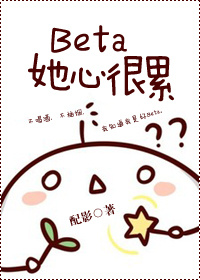unbeaten tracks in japan-第53部分
按键盘上方向键 ← 或 → 可快速上下翻页,按键盘上的 Enter 键可回到本书目录页,按键盘上方向键 ↑ 可回到本页顶部!
————未阅读完?加入书签已便下次继续阅读!
not in every place!〃
Their bows are only three feet long; and are made of stout saplings
with the bark on; and there is no attempt to render them light or
shapely at the ends。 The wood is singularly inelastic。 The arrows
(of which I have obtained a number) are very peculiar; and are made
in three pieces; the point consisting of a sharpened piece of bone
with an elongated cavity on one side for the reception of the
poison。 This point or head is very slightly fastened by a lashing
of bark to a fusiform piece of bone about four inches long; which
is in its turn lashed to a shaft about fourteen inches long; the
other end of which is sometimes equipped with a triple feather and
sometimes is not。
The poison is placed in the elongated cavity in the head in a very
soft state; and hardens afterwards。 In some of the arrow…heads
fully half a teaspoonful of the paste is inserted。 From the nature
of the very slight lashings which attach the arrow…head to the
shaft; it constantly remains fixed in the slight wound that it
makes; while the shaft falls off。
Pipichari has given me a small quantity of the poisonous paste; and
has also taken me to see the plant from the root of which it is
made; the Aconitum Japonicum; a monkshood; whose tall spikes of
blue flowers are brightening the brushwood in all directions。 The
root is pounded into a pulp; mixed with a reddish earth like an
iron ore pulverised; and again with animal fat; before being placed
in the arrow。 It has been said that the poison is prepared for use
by being buried in the earth; but Benri says that this is needless。
They claim for it that a single wound kills a bear in ten minutes;
but that the flesh is not rendered unfit for eating; though they
take the precaution of cutting away a considerable quantity of it
round the wound。
Dr。 Eldridge; formerly of Hakodate; obtained a small quantity of
the poison; and; after trying some experiments with it; came to the
conclusion that it is less virulent than other poisons employed for
a like purpose; as by the natives of Java; the Bushmen; and certain
tribes of the Amazon and Orinoco。 The Ainos say that if a man is
accidentally wounded by a poisoned arrow the only cure is immediate
excision of the part。
I do not wonder that the Government has prohibited arrow…traps; for
they made locomotion unsafe; and it is still unsafe a little
farther north; where the hunters are more out of observation than
here。 The traps consist of a large bow with a poisoned arrow;
fixed in such a way that when the bear walks over a cord which is
attached to it he is simultaneously transfixed。 I have seen as
many as fifty in one house。 The simple contrivance for inflicting
this silent death is most ingenious。
The women are occupied all day; as I have before said。 They look
cheerful; and even merry when they smile; and are not like the
Japanese; prematurely old; partly perhaps because their houses are
well ventilated; and the use of charcoal is unknown。 I do not
think that they undergo the unmitigated drudgery which falls to the
lot of most savage women; though they work hard。 The men do not
like them to speak to strangers; however; and say that their place
is to work and rear children。 They eat of the same food; and at
the same time as the men; laugh and talk before them; and receive
equal support and respect in old age。 They sell mats and bark…
cloth in the piece; and made up; when they can; and their husbands
do not take their earnings from them。 All Aino women understand
the making of bark…cloth。 The men bring in the bark in strips;
five feet long; having removed the outer coating。 This inner bark
is easily separated into several thin layers; which are split into
very narrow strips by the older women; very neatly knotted; and
wound into balls weighing about a pound each。 No preparation of
either the bark or the thread is required to fit it for weaving;
but I observe that some of the women steep it in a decoction of a
bark which produces a brown dye to deepen the buff tint。
The loom is so simple that I almost fear to represent it as
complicated by description。 It consists of a stout hook fixed in
the floor; to which the threads of the far end of the web are
secured; a cord fastening the near end to the waist of the worker;
who supplies; by dexterous rigidity; the necessary tension; a frame
like a comb resting on the ankles; through which the threads pass;
a hollow roll for keeping the upper and under threads separate; a
spatula…shaped shuttle of engraved wood; and a roller on which the
cloth is rolled as it is made。 The length of the web is fifteen
feet; and the width of the cloth fifteen inches。 It is woven with
great regularity; and the knots in the thread are carefully kept on
the under side。 {20} It is a very slow and fatiguing process; and
a woman cannot do much more than a foot a day。 The weaver sits on
the floor with the whole arrangement attached to her waist; and the
loom; if such it may be called; on her ankles。 It takes long
practice before she can supply the necessary tension by spinal
rigidity。 As the work proceeds she drags herself almost
imperceptibly nearer the hook。 In this house and other large ones
two or three women bring in their webs in the morning; fix their
hooks; and weave all day; while others; who have not equal
advantages; put their hooks in the ground and weave in the
sunshine。 The web and loom can be bundled up in two minutes; and
carried away quite as easily as a knitted soft blanket。 It is the
simplest and perhaps the most primitive form of hand…loom; and
comb; shuttle; and roll; are all easily fashioned with an ordinary
knife。
LETTER XXXVII(Continued)
A Simple Nature…WorshipAino GodsA Festival SongReligious
IntoxicationBear…WorshipThe Annual SaturnaliaThe Future
StateMarriage and DivorceMusical InstrumentsEtiquetteThe
ChieftainshipDeath and BurialOld AgeMoral Qualities。
There cannot be anything more vague and destitute of cohesion than
Aino religious notions。 With the exception of the hill shrines of
Japanese construction dedicated to Yoshitsune; they have no
temples; and they have neither priests; sacrifices; nor worship。
Apparently through all traditional time their cultus has been the
rudest and most primitive form of nature…worship; the attaching of
a vague sacredness to trees; rivers; rocks; and mountains; and of
vague notions of power for good or evil to the sea; the forest; the
fire; and the sun and moon。 I cannot make out that they possess a
trace of the deification of ancestors; though their rude nature
worship may well have been the primitive form of Japanese Shinto。
The solitary exception to their adoration of animate and inanimate
nature appears to be the reverence paid to Yoshitsune; to whom they
believe they are greatly indebted; and who; it is supposed by some;
will yet interfere on their behalf。 {21} Their godsthat is; the
outward symbols of their religion; corresponding most likely with
the Shinto goheiare wands and posts of peeled wood; whittled
nearly to the top; from which the pendent shavings fall down in
white curls。 These are not only set up in their houses; sometimes
to the number of twenty; but on precipices; banks of rivers and
streams; and mountain…passes; and such wands are thrown into the
rivers as the boatmen descend rapids and dangerous places。 Since
my baggage horse fell over an acclivity on the trail from Sarufuto;
four such wands have been placed there。 It is nonsense to write of
the religious ideas of a people who have none; and of beliefs among
people who are merely adult children。 The traveller who formulates
an Aino creed must 〃evolve it from his inner consciousness。〃 I
have taken infinite trouble to learn from themselves what their
religious notions are; and Shinondi tells me that they have told me
all they know; and the whole sum is a few vague fears and hopes;
and a suspicion that there are things outside themselves more
powerful than themselves; whose good influences may be obtained; or
whose evil influences may be averted; by libations of sake。
The word worship is in itself misleading。 When I use it of these
savages it simply means libations of sake; waving bowls and waving
hands; without any spiritual act of deprecation or supplication。
In such a sense and such alone they worship the sun and moon (but
not the stars); the forest; and the sea。 The wolf; the black
snake; the owl; and several other beasts and birds have the word
kamoi; god; attached to them; as the wolf is the 〃howling god;〃 the
owl 〃the bird of the gods;〃 a black snake the 〃raven god;〃 but none
of these things are now 〃worshipped;〃 wolf…worship having quite
lately died out。 Thunder; 〃the voice of the gods;〃 inspires some
fear。 The sun; they say; is their best god; and the fire their
next best; obviously the divinities from whom their greatest
benefits are received。 Some idea of gratitude pervades their rude
notions; as in the case of the 〃worship〃 paid to Yoshitsune; and it
appears in one of the rude recitations chanted at the Saturnalia
which in several places conclude the hunting and fishing seasons:…
〃To the sea which nourishes us; to the forest which protects us; we
present our grateful thanks。 You are two mothers that nourish the
same child; do not be angry if we leave one to go to the other。
〃The Ainos will always be the pride of the forest and of the sea。〃
The solitary act of sacrifice which they perform is the placing of
a worthless; dead bird; something like a sparrow; near one of their
peeled wands; where it is left till it reaches an advanced stage of
putrefaction。 〃To drink for the god〃 is the chief act of
〃worship;〃 and thus drunkenness and religion are inseparably
connected; as the more sake the Ainos drink the more devout they
are; and the better pleased are the gods。 It does not appear that
anything but sake is of sufficient value to please the gods。 The
libations to the fire and the peeled post are never omitted; and
are always accompanied by the inward waving of the sake bowls。
The peculiarity which distinguishes this rude mythology is the
〃worship〃 of the bear; the Yezo bear being one o

![[综]fate依莉雅线封面](http://www.baxi2.com/cover/18/18531.jpg)

![[hp-adhp]when that greater dream had gone封面](http://www.baxi2.com/cover/noimg.jpg)
![(电竞同人)[电竞]气息(mataxlooper)封面](http://www.baxi2.com/cover/22/22593.jpg)